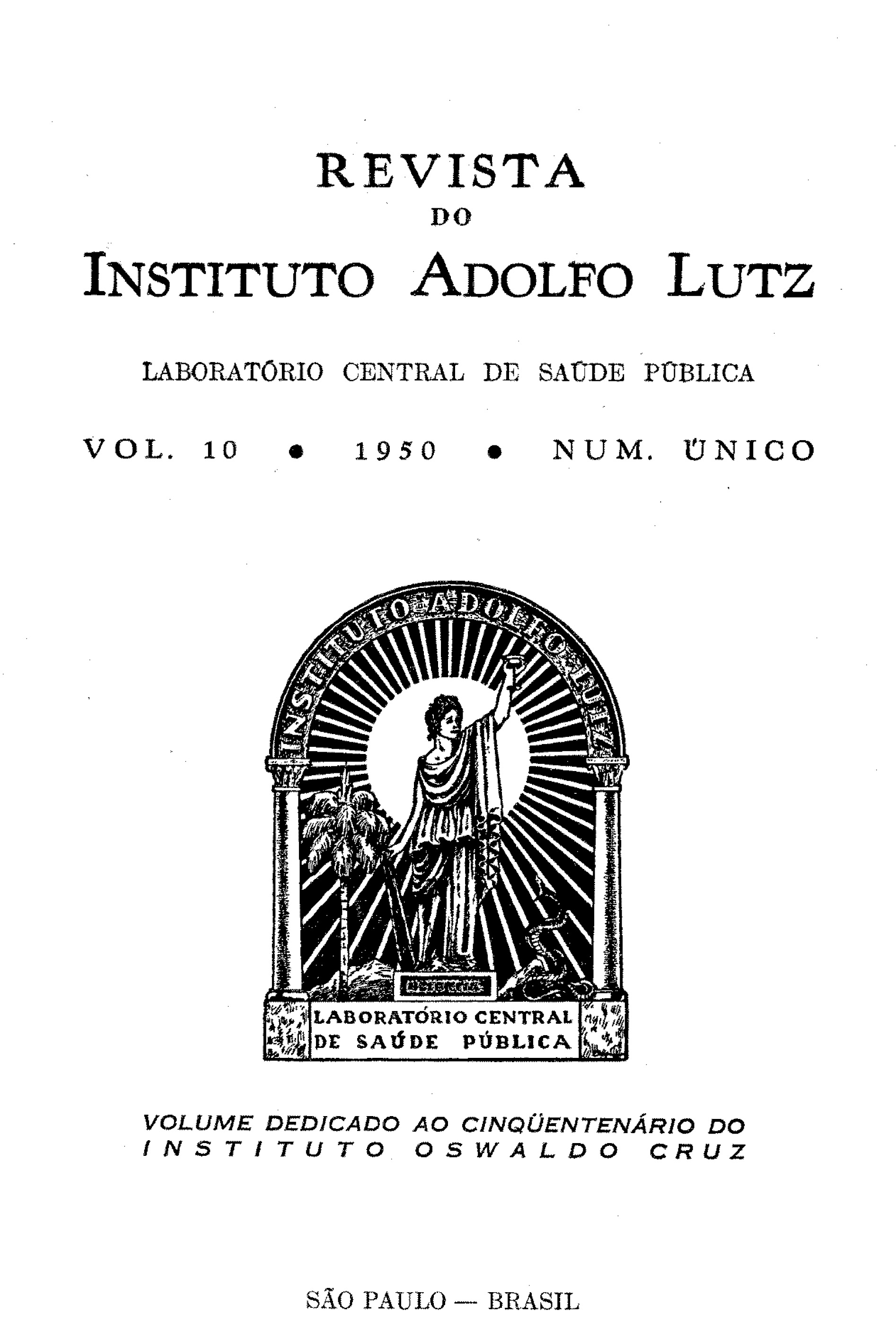Resumo
Em colaboração com LACAZ (1948-1949), publicamos um trabalho sôbre Blastomicose tipo Jorge Lobo, considerada, hoje em dia, como forma queloideana da blastomicose sul-americana. Nessa publicação, anotamos 6 casos da referida micose, comprovados histopatológicamente. Estava já no prelo o trabalho, quando soubemos da ocorrência de um novo, em São Paulo, observado por CERRUTI e ZAMITH (1948). Elevava-se, assim, a 7 o número casos conhecidos no Brasil e comprovados Histopatológicamente.Referências
1. ANIGSTEIN,L.O D. M. WHITNEY e J. BENINSON- 1948 - Aureomycin, newantibiotic with antirickettsial properties; its effect on experimental spotted fever and epidemic typhus. Ann. New York Acad. Se. 51: 306.
2. ANIGSTEIN,L., D. M. WHITNEye J. BENINSON- 1949 - Aureomycin ; proteetive effect in experimental Rocky Mountain spotted fever and typhus with particular reference to intermitent treatment. Texas Rep. Biol. & Med. 7: 96-110.
3. AUREOMYCIN: A VERSATILEANTIBIOTIC- 1949 - Lancet I: 69.
4. BRYER, M. S. et ai. - 1948 - Treatment of experimental infections with Aureomyoin. Ann. New York Acad. Se. 51: 254.
5. COLLINS,H. S., T. F. PAYNEe M. FINLAND- 1948 - Clinical studies with Aureomycin. Ann. New York Acad. Se. 51: 231.
6. COOK,C. -1948 - Rocky Mountain spotted fever treated with Aureomycin. J. Âm. Med. Ass. 138 : 885.
7. DOWLING,H.F. et ai. - 1948 - Studies on serum concentrations in humans and preliminary observation on the treatment of human infections with Aureomycin. Ann. New York Acad. Se. 51: 241.
8. EINLAND,M. - 1949 - Present status of Aureomycin therapy, Ann. Irü, Med. 31: 39. HARNED,B. K. et ai. - 1948 - The pharmacology of Duomycin. Ann. New York Acad. Sc. 51: 182.
9. LEDERLE LABORATORIESDIVISION - Aureomicina. 1949; 61245-25 A.C.
10. LENNETTE, E.H., G. MEIKLEJOHNe H.M. THELEN - 1948 - Treatment of Q Fever in man with Aureomycin. Ann. New York Acad. Se. 51: 331.
11. LEVADITI,C. e A. VAISMAN- 1950 - Effects virulicides de I'Aureomyein sur le virus de Ia Iiêvre aphteuse. Compt. Rend. Acad. Se. 230: 1221.
12. MACEDO,J.J., C.H.BRANDÃOe E.L.MoNTEIRO - 1950 - Ação da Aureomicina sôbre a Febre Maeulosa experimental em cobaios. Trabalho apresentado ao V Congresso Internacional de Microbiologia, Rio de Janeiro.
13. PAYNE, E.H., J.A.KNAUDT e S.PALACIOS- 1948 - Treatment of epidemic typhus with chloromycetin. J.Trop.Med.&Hyg. 51: 68-71.
14. PIZA, J.T. - Comunicação ao Departamento de Higiene e Medicina Tropical da Associação Paulista de Medicina, 1950.
15. SCHOENBACH,E.E., M.S.BRYER e H.P.LONG - The pharmacology and elinical trial of Aureomycin; a preliminary reporto
16. VAISMAN,A. - 1950 - Synergie de Ia chloromycetine et de l'aureomycine dans le traitment de l'infection typhique de Ia souris. Compt.Rend.Soc.Biol. 144: 328.

Este trabalho está licenciado sob uma licença Creative Commons Attribution 4.0 International License.
Copyright (c) 1950 José de Toledo Piza, J. J. de Macedo, E. Lemos Monteiro, C. Haberbeck Brandão, Luiz Pereira Barreto Neto
